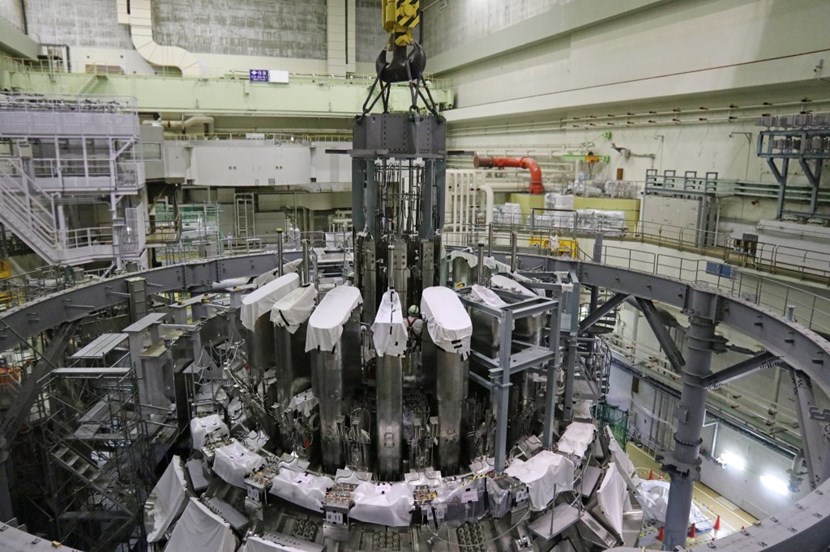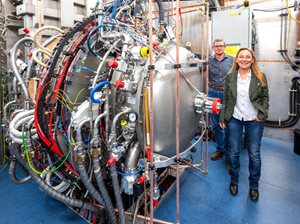ITER NEWSLINE
-
JT-60SA
"ITER satellite" to begin operating next year
JT-60SA | "ITER satellite" to begin operating next year
In a major assembly milestone for the JT-60SA tokamak, the 12-metre-tall central solenoid was successfully installed by overhead crane on 8 May. Japanese television was there to film the operation.

The 100-tonne, 4-module central solenoid was installed on the JT-60SA tokamak in early May. This is the last of the major magnets to be integrated into the machine.
JT-60SA will begin operating in 2020 as a fully superconducting tokamak capable of confining high-temperature deuterium plasmas. The experiment—a major modification of the former JT-60U tokamak at the Naka Fusion Institute in Japan—is designed to address key physics for ITER and next-stage devices.
Tokamak assembly has been underway since 2013 and will be completed in March of next year, with the first plasma planned in September 2020.
The single heaviest component—the central solenoid—was lowered into the centre of the donut-shaped machine on 8 May (see videos below).
How JT-60SA compares to ITER
Major radius (metres) ~3.0 (~6.2)
Plasma current (MA) <5.5 (<15)
Plasma volume (m3) ~140 (~840)
Inductive pulse length (s) 100 (>400)
Experts highlight the complementarity of the JT-60SA and ITER machines, which record overlaps in areas including magnet conductor design and testing, cryoplant design, in-vessel remote handling, and heating and current drive systems. By coming on line before ITER, JT-60SA will allow the exploration of ITER-relevant high density plasma regimes and the optimization of configurations for ITER and the next-phase device DEMO. (See more about the scientific objectives of JT-60SA
here.)
JT-60SA is financed jointly by Europe and Japan through the Broader Approach Agreement*, through implementing agencies Fusion for Energy (F4E) and the National Institutes for Quantum and Radiological Science and Technology (QST) of Japan.
*The Broader Approach agreement was concluded between the European Atomic Energy Community (Euratom) and Japan in 2007 for advanced R&D activities which aim to complement the ITER project and to accelerate the realization of fusion energy. Learn more here.
See a related article of the European Domestic Agency website here. See the video clips on TV channels Asahi and Ibaraki (in Japanese).
return to the latest published articles







